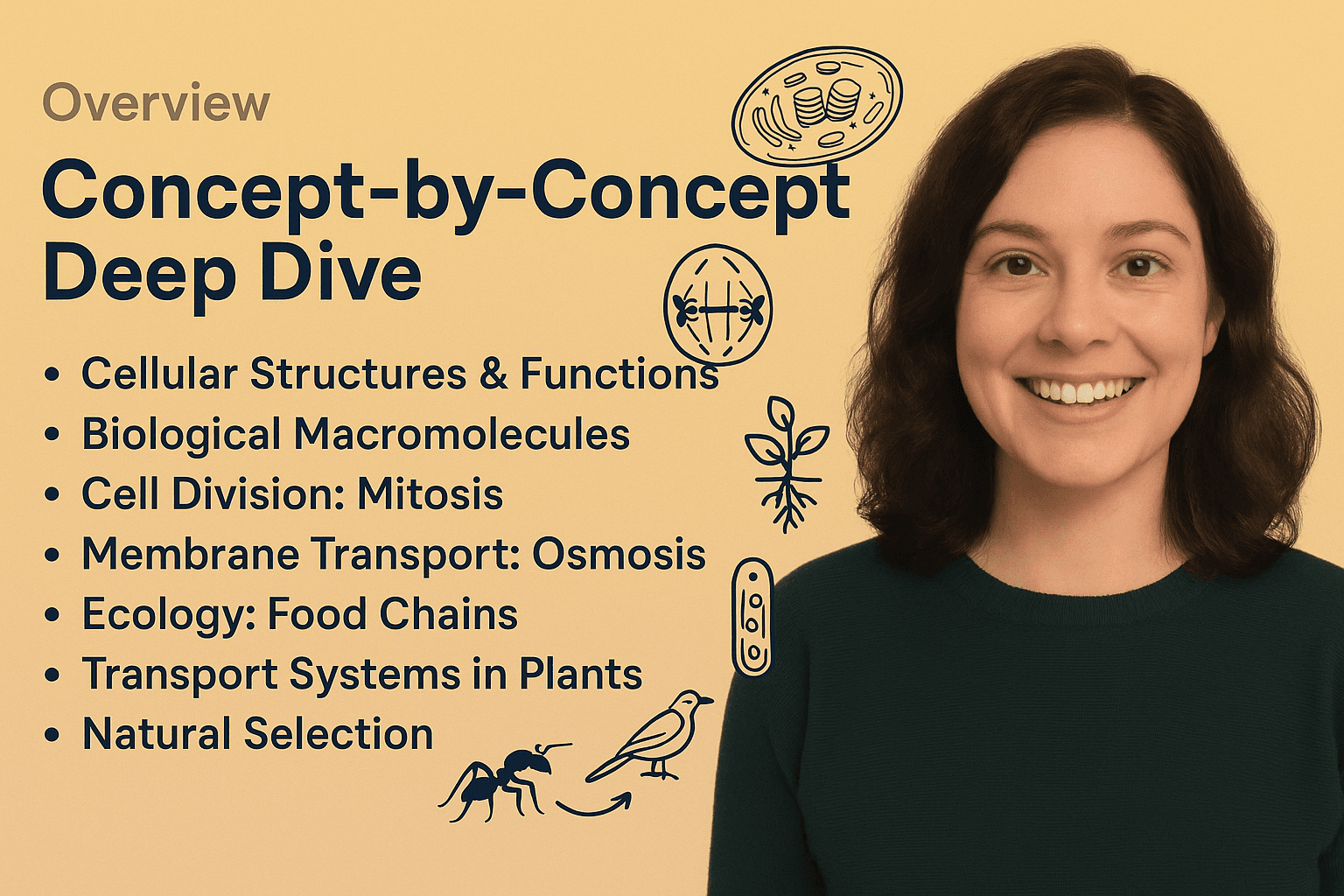Biology 1
Concept-focused guide for Biology 1.
~6 min read

Overview
Welcome! In this vlog-style learning guide, we’ll tackle essential biology concepts that underpin common quiz questions. You’ll learn not just what’s being asked, but why each topic matters and how to reason through similar problems. Our focus will be on the logic and structure of biological systems—from cell machinery to ecological roles—so you can confidently approach any related question. Let’s dig deep into the “how” and “why” behind the answers, building your mastery for both exams and real-world understanding.
Concept-by-Concept Deep Dive
1. Cellular Structures & Their Functions
Cells are the fundamental units of life, and within them, specialized structures (organelles) each play distinct roles.
Key Organelles
- Chloroplasts: Found in plant cells, these capture light energy and convert it into chemical energy via photosynthesis. Their internal membranes (thylakoids) house pigments like chlorophyll, crucial for light absorption.
- Cell Wall: Present in plants, fungi, and some bacteria, the cell wall offers structural support, determining cell shape and protecting against mechanical stress. In plants, it’s mainly made of cellulose.
- Nucleus, Mitochondria, and Others: Each organelle has a unique function, such as housing genetic material (nucleus) or producing ATP (mitochondria).
Calculation Recipe
If asked about the function or identity of an organelle, first recall the unique process it’s associated with (e.g., photosynthesis → chloroplast).
Common Misconceptions
- Confusing plant cell structures (cell wall vs. cell membrane).
- Mixing up energy processes: mitochondria for respiration, chloroplasts for photosynthesis.
2. Biological Macromolecules & Their Building Blocks
Life’s chemistry is based on four major classes of macromolecules: proteins, nucleic acids, carbohydrates, and lipids.
Proteins & Amino Acids
Proteins are polymers made by linking amino acids through peptide bonds. Their structure determines functions such as enzyme catalysis, structural support, and signaling.
Nucleic Acids & Genetic Information
DNA and RNA are chains of nucleotides. DNA stores and transmits hereditary information, while RNA translates that information into proteins.
Carbohydrates & Lipids
Carbohydrates (sugars) provide energy and structure. Lipids (fats, oils) are energy stores and components of membranes.
Step-by-Step Recognition
- To identify the building blocks, remember: Proteins → amino acids, Nucleic acids → nucleotides, Carbohydrates → monosaccharides, Lipids → fatty acids and glycerol.
Common Misconceptions
- Thinking all macromolecules are made from the same monomers.
- Confusing the storage roles of DNA (information) vs. carbohydrates (energy).
3. Cell Division: Mitosis and Its Phases
Mitosis is the process by which a eukaryotic cell divides its nucleus and contents to produce two identical daughter cells.
Phases of Mitosis
- Prophase: Chromosomes condense; spindle forms.
- Metaphase: Chromosomes align at the cell’s equator (middle).
- Anaphase: Sister chromatids separate to opposite poles.
- Telophase: Nuclear membranes reform.
Step-by-Step Approach
- Visualize the sequence: Condense, Align, Separate, Reform.
- For questions about specific phases, focus on the unique arrangement or movement of chromosomes.
Common Misconceptions
- Mixing metaphase (alignment) and anaphase (separation).
- Thinking all chromosomes move at once, or confusing mitosis with meiosis.
4.
🔒 Continue Reading with Premium
Unlock the full vlog content, professor narration, and all additional sections with a one-time premium upgrade.
One-time payment • Lifetime access • Support development
Join us to receive notifications about our new vlogs/quizzes by subscribing here!